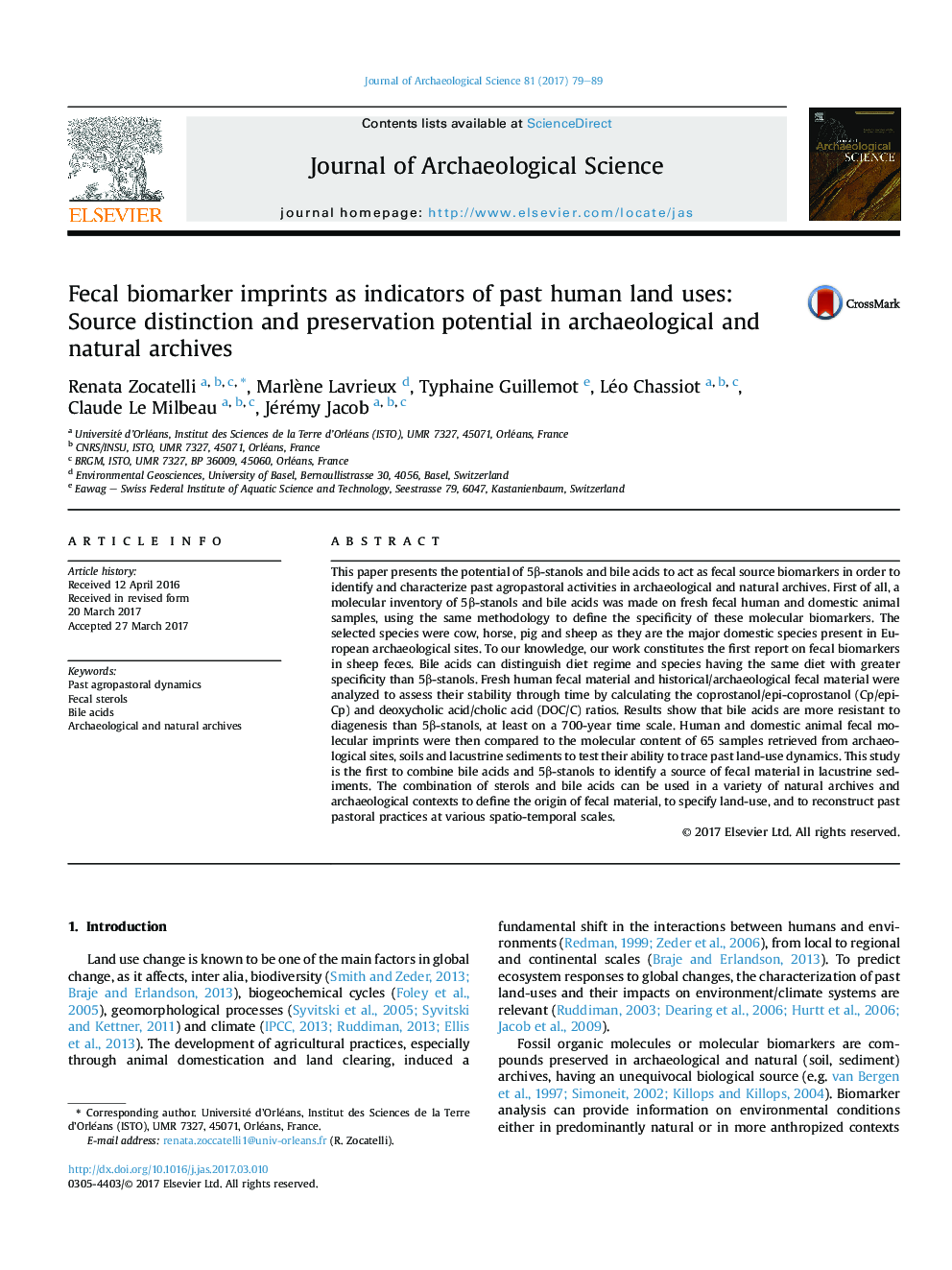| کد مقاله | کد نشریه | سال انتشار | مقاله انگلیسی | نسخه تمام متن |
|---|---|---|---|---|
| 5112031 | 1483879 | 2017 | 11 صفحه PDF | دانلود رایگان |
عنوان انگلیسی مقاله ISI
Fecal biomarker imprints as indicators of past human land uses: Source distinction and preservation potential in archaeological and natural archives
ترجمه فارسی عنوان
زیست سنجی مدفوعی به عنوان شاخص های استفاده گذشته از زمین های انسانی اثر می گذارد: تمایز منبع و قابلیت ذخیره در آرشیو های باستان شناسی و طبیعی
دانلود مقاله + سفارش ترجمه
دانلود مقاله ISI انگلیسی
رایگان برای ایرانیان
موضوعات مرتبط
مهندسی و علوم پایه
مهندسی مواد
دانش مواد (عمومی)
چکیده انگلیسی
This paper presents the potential of 5β-stanols and bile acids to act as fecal source biomarkers in order to identify and characterize past agropastoral activities in archaeological and natural archives. First of all, a molecular inventory of 5β-stanols and bile acids was made on fresh fecal human and domestic animal samples, using the same methodology to define the specificity of these molecular biomarkers. The selected species were cow, horse, pig and sheep as they are the major domestic species present in European archaeological sites. To our knowledge, our work constitutes the first report on fecal biomarkers in sheep feces. Bile acids can distinguish diet regime and species having the same diet with greater specificity than 5β-stanols. Fresh human fecal material and historical/archaeological fecal material were analyzed to assess their stability through time by calculating the coprostanol/epi-coprostanol (Cp/epi-Cp) and deoxycholic acid/cholic acid (DOC/C) ratios. Results show that bile acids are more resistant to diagenesis than 5β-stanols, at least on a 700-year time scale. Human and domestic animal fecal molecular imprints were then compared to the molecular content of 65 samples retrieved from archaeological sites, soils and lacustrine sediments to test their ability to trace past land-use dynamics. This study is the first to combine bile acids and 5β-stanols to identify a source of fecal material in lacustrine sediments. The combination of sterols and bile acids can be used in a variety of natural archives and archaeological contexts to define the origin of fecal material, to specify land-use, and to reconstruct past pastoral practices at various spatio-temporal scales.
ناشر
Database: Elsevier - ScienceDirect (ساینس دایرکت)
Journal: Journal of Archaeological Science - Volume 81, May 2017, Pages 79-89
Journal: Journal of Archaeological Science - Volume 81, May 2017, Pages 79-89
نویسندگان
Renata Zocatelli, Marlène Lavrieux, Typhaine Guillemot, Léo Chassiot, Claude Le Milbeau, Jérémy Jacob,
